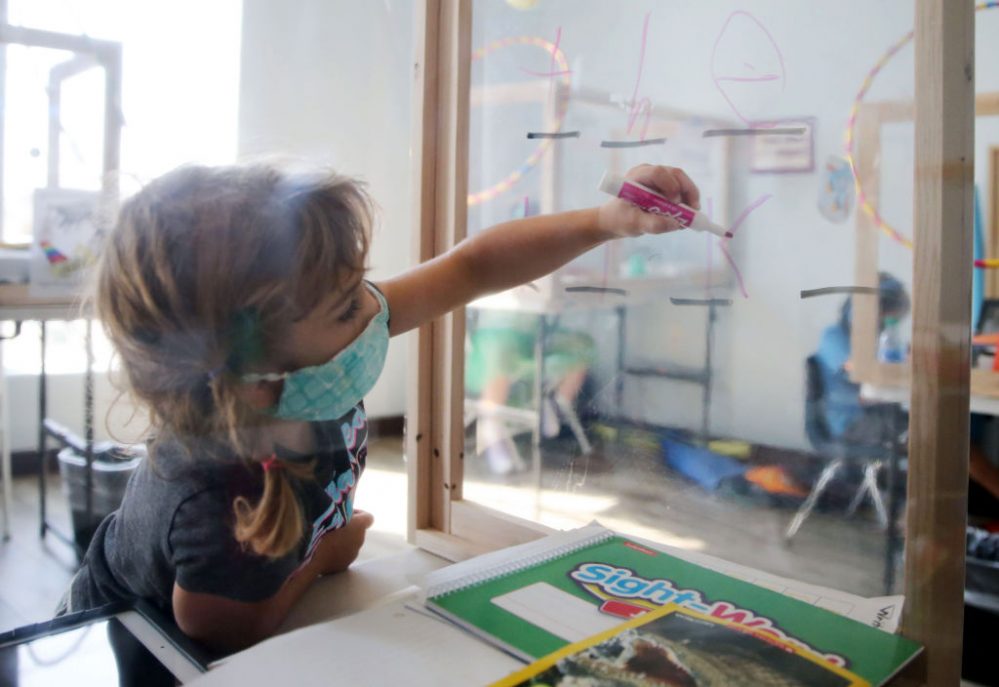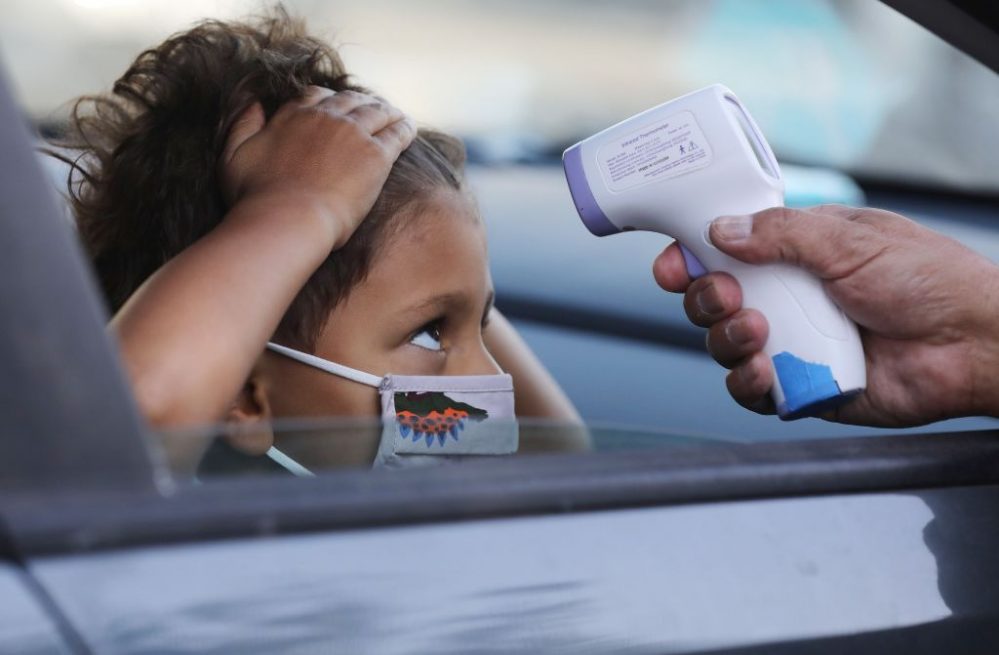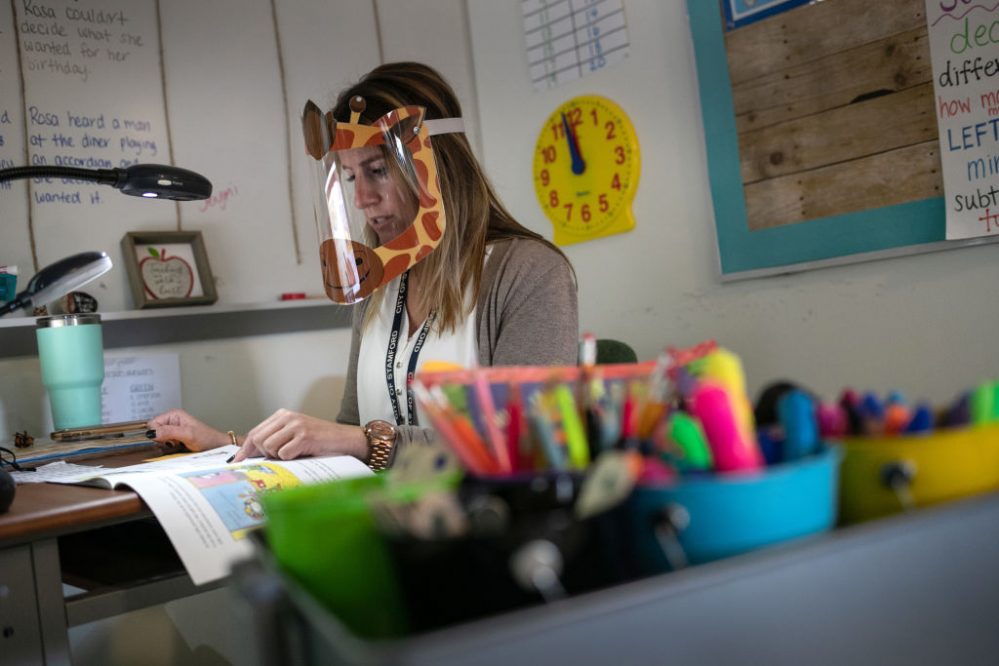Your donation will help us produce journalism like this. Please give today.

Getty Images
After nearly a year of disastrous COVID news, it emerged in mid-February like a light at the end of the tunnel. Infections began dramatically falling and “herd immunity,” some experts began to say, could spell the end of the pandemic in the not-so-distant future.
At some point this year — estimates range from mid-summer to as early as April — thanks to vaccinations and recovered cases, America will reach a point where enough people are immune to the virus that it can no longer spread through the population.
But while the prospect of stopping COVID-19 transmission, which has claimed a mind-boggling 500,000 lives, is undeniably good news, the update comes at a time when immunologists and virologists have begun to agree that complete eradication of COVID appears unlikely, and that the virus may become endemic, meaning it could circulate in pockets of the global population for years to come.
As schools look toward the 2021-22 school year, health experts say that a return to “pre-pandemic normal” may not be wise — or possible.
“This next year is going to be one of transition,” Dr. Sara Johnson, co-director of the Johns Hopkins Consortium for School-Based Public Health Solutions, told The 74. “We’re going to be playing on the defensive for a while until we have the data on the ground in schools to tell us … this is really the end [of the pandemic].”
Where the “tipping point” for herd immunity may be, Johnson says, “is an incredibly complicated question.” Health experts have identified differing benchmarks — mostly between 70 and 90 percent protection from the virus population-wide. Unsurprisingly, lower thresholds predict immunity earlier than higher ones.
But the end of the pandemic, experts say, will be a blurry line.
“There’s not going to be a special bell that goes off the day we reach herd immunity,” said Dr. Benjamin Linas, associate professor of epidemiology at Boston University. “It’s going to be a sense of we think we got there, right?”
Amid a range of predictions for when that may be, Johnson is skeptical of the more optimistic visions.
“I would not be planning that [COVID-19] is going to be able to be shut off like a spigot in April,” she said. “Our data simply don’t support that.”

A California student writes on a divider used for socially distanced learning at a community center open for students whose schools remain closed for in-person classes. (Mario Tama / Getty Images)
Dr. Philip Chan, associate professor of medicine at Brown University, agrees that schools will have to remain vigilant even into the long-term. But that does not mean they need to operate remotely, he says. In Rhode Island, where Chan serves as medical director for the state department of health, schools have largely remained open this year, maintaining low rates of transmission. With proper safety measures, and especially as vaccinations continue, in-person learning should be the norm, Chan believes.
“I think we can open school safely,” he said.
But even when the country reaches herd immunity — at whatever benchmark that may prove to be — Chan recommends maintaining mask mandates as students return to classrooms.
“Masking is one of those simple things that you can do that generally isn’t hard to do and could prevent COVID and other respiratory diseases,” he said, adding that there may be some wiggle room on other protocols, such as the requirement that students and teachers remain 6 feet apart. “If anything we’re going to relax, the first thing … would be some of the physical distancing because of just the infrastructure in schools.”
Linas shares a similar vision.
“For the fall, we should expect to be 100 percent in-person learning in our buildings still wearing masks,” he said, adding that in the early months of next school year, “I think we will still have 3 feet distancing.”
To be ready for a complete return to classrooms by September, Linas says schools that are operating remotely should start letting students come back this spring.
“If you want to maximize our chances of having full-time in-person learning in the 2021-22 school year, I think we have to start in the 2020-21 school year,” he said. “We can’t just assume that come Sept. 1, we’re going to walk back in [to school] masks off and everything’s gonna be like it was in 2019.”

A masked student receives a temperature check before school. (Mario Tama / Getty Images)
In guidelines released in mid-February by the Centers for Disease Control, the Biden administration clarified that many students and educators can begin returning to classrooms. The safety of in-person learning, the recommendations said, depends primarily on COVID-19 case rates in the surrounding community and safety measures like masking, distancing and ventilation. According to the guidance, teacher vaccinations were not a prerequisite to reopen.
But even as case rates fall and vaccinations continue, health experts’ calls for schools to exercise caution into next year reflects worries for some key unknown factors in the face of a pandemic that has proven unpredictable at every turn.
First, while the American vaccination program has had a relatively swift rollout, there will likely be a lag time for other countries. This means that even if a critical mass of adults in this country get inoculated, which could prove a challenge in its own right due to widespread vaccine hesitancy, COVID-19 will likely circulate in pockets of the global population for years to come.
It’s “probably not realistic to think we’re going to truly eradicate SARS-CoV-2 off the planet,” Linas said. “It’s going to be out there.”
The 1918 Spanish Flu, for example, which killed more than 50 million people over a span of two years, has viral descendents that still circulate the globe more than a century later and infect millions of people each year during flu season. Though coronaviruses differ significantly from influenza viruses, which evolve more quickly, some experts believe that COVID-19 could settle into a seasonal pattern of annual winter outbreaks similar to the flu.
The continued circulation of the virus gives rise to another key fear for health experts: variants. So far, approved vaccines retain significant effectiveness against new identified strains of COVID-19. But it’s still possible that a new version of the virus could arise that would have resistance.
“The variants are really, to me, the major unknown in this whole equation,” Chan said.
Youth vaccinations, which remain in developmental stages, present another concern. Without inoculated students, Johnson says, schools do not have sufficient evidence that rolling back health protocols will be safe.
“Kids will be among the last to be vaccinated, particularly young children,” she said. “What that means for the continuation of some of our protective public health mitigation measures and schools I think is a little unclear right now.”

A Connecticut teacher reads to her second grade class. Last fall, the district took a hybrid approach to schooling with some students in-person and some learning remotely. (John Moore / Getty Images)
Even without vaccinations, however, studies show that youth under 15 years old are about half as likely to catch and spread the virus as adults. When kids do become infected, they tend to get less sick thanks to active immune systems. A recent CDC study found that, when safety measures aren’t enforced, teachers become central to COVID transmission — and students, especially younger students, contribute less to spread.
Still, for the time being, returning to in-person learning will mean masking, distancing, and ventilation.
“If we abandon [safety protocols] too soon,” said Johnson, “I think we risk rolling back some of the real progress that we’ve made.”
“We’d all like to know when the curtain is going to come down on this terrible play that we’ve been watching for the last year,” she continued. “I just don’t think that it’s going to happen like that. I think that we are going to be really watching carefully and waiting and double-checking and making sure that we’re not seeing any more spread in our communities for a long time.”
This article was published in partnership with The 74. Sign up for The 74’s newsletter here.